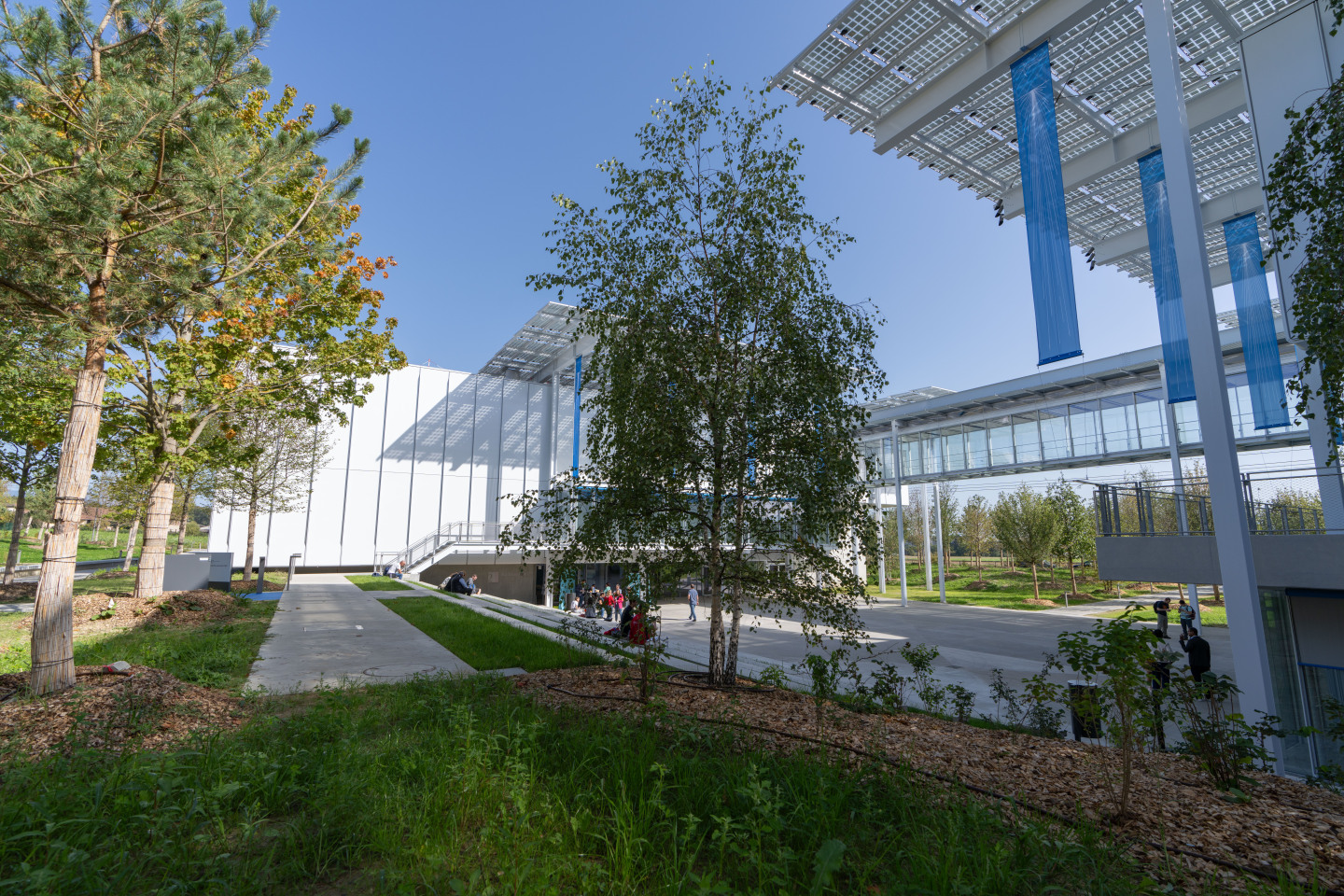Today, CERN is publishing its third environment report for the years 2021 and 2022.
This report chronicles the advancements made in key environmental domains and specifically covers the measures taken by CERN to reach its priority objectives: limiting the rise in electricity and water consumption and reducing direct greenhouse gas emissions.
During a large part of this reporting period, CERN’s accelerator complex was undergoing a long shutdown for maintenance and upgrades. In July 2022, operations successfully resumed with the start of Run 3. CERN is well on track to meet the reduction objectives set for the end of Run 3 at the end of 2025, which use 2018 as the baseline year.
“Over the years since we embarked on our first environment report, we have learned a great deal about our environmental footprint, implemented mechanisms to better understand and control it and increased our efforts to identify and develop technologies stemming from our core research that have the potential to benefit the environment,” says Benoît Delille, head of the CERN Occupational Health and Safety and Environmental Protection unit.
The Laboratory is committed to limiting the rise in electricity consumption to 5%, corresponding to a target of 1314 GWh, while significantly improving the performance of its facilities. A total of 1215 GWh was consumed in 2022 and the accelerator complex is now more efficient. In the light of the energy crisis, CERN also implemented additional energy-saving measures as a mark of social responsibility, and further explored the diversification of energy sources and the launch of heat-recovery projects. Thanks to these efforts, CERN was awarded the internationally recognised ISO 50001 energy-management certification earlier this year.
CERN is committed to keeping the increase in its water consumption below 5% despite a growing demand for water cooling at its facilities. Since 2000, CERN has radically decreased its water consumption by about 80%.
With respect to direct greenhouse gas emissions, CERN’s objective is to achieve a 28% reduction by the end of Run 3, which corresponds to a target of 138 300 tCO2e. In 2022, direct emissions of 184 300 tCO2e were generated. A comprehensive programme to ensure progress towards the objective is in place, which includes increased efforts by the experiments to limit gas consumption and work towards replacing current gases with more environmentally friendly ones.
When reporting on indirect greenhouse gas emissions, CERN now includes emissions arising from procurement and details the main sources of related emissions.
The report also explores other key environmental areas, including how waste is managed. In 2022, the recycling rate for conventional waste was 69%, compared to 56% in 2018.
Biodiversity, land usage and landscape change are another important focus of the report. Among several activities carried out during 2021 and 2022, CERN took flora and fauna inventories and identified “areas of interest” to be classed as a priority for preservation in the event of any planned works or projects.
Over the reporting period, noise levels measured at the boundaries of CERN’s sites were typically around 50 dBA during the day and 45 dBA at night. CERN has implemented an online real-time monitoring system at specific points on its site.
With respect to ionising radiation, the European annual dose limit for public exposure to artificial sources is 1 mSv. CERN is committed to keeping its contribution to no more than 0.3 mSv per year. In 2022, the actual dose received by any member of the public living near the Laboratory was less than 0.01 mSv, which is more than 100 times lower than the average annual dose received from medical exposure per person in Switzerland.
Finally, the report covers the latest information on how CERN’s technology and knowledge benefit society, notably via the new CERN Innovation Programme on Environmental Applications launched in March 2022.
CERN is committed to environmentally responsible research and transparent reporting. As a leading scientific organisation, CERN aspires to be a role model, publishing biennial environment reports that adhere to the Global Reporting Initiative (GRI) reporting standards.
The online version of the report is available at: https://hse.cern/environment-report-2021-2022.
A PDF version is available here.

